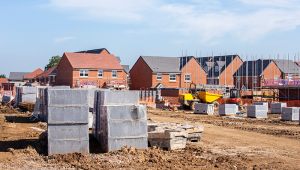
Image © Techa Tungateja/iStock
The publication, developed by the Quality of Life Foundation, aims to bridge the gap between planning and public health to provide advice for both those shaping communities across local government and public health professionals.
It argued many of the most significant health problems are the result of societal, environmental and economic factors.
“Poverty and elements such as whether we have access to safe and secure housing, the levels of pollution we’re exposed to, and the quality of the green spaces nearby all have a role to play,” it said.
“However, not all homes and neighbourhoods provide the essential elements to promote health and wellbeing, and this leads to inequalities in health.”
In particular, there is a deprivation-related gap in healthy life expectancy at birth of almost 20 years for women in England, it said.
On housing, it noted that 23% of private rented homes do not meet decent home standards and almost a quarter of adults living in overcrowded homes report psychological distress.
Decisions on the built environment should be evidence-led, but in practice that approach was hindered by limited resources, political pressures and the difficulty of accessing the appropriate data, it said, and the tools available for local authorities were not always clear.
Among its suggestions were the early prioritisation of health and wellbeing, training to ensure teams could gather and analyse data themselves and the allocation of financial and staff resources to support evidence-based initiatives.
The Quality of Life Foundation said it hoped the guidance would help councils make decisions that improved both the lives of residents and the health of local communities.
“By using evidence-based and - crucially - collaborative approaches, local authorities can make informed decisions that not only improve the quality of life for residents but also create sustainable, healthy communities,” said co-founder and director Matthew Morgan.
“This guide shows planners and others in relevant fields that they’re not on their own in this work.
“We hope it’ll catalyse conversations across council teams and with other local stakeholders.”
The guidance was welcomed by David Fothergill, chair of the LGA’s community wellbeing board, who said that where someone lived profoundly impacted their health and wellbeing.
“Instead of relying solely on the NHS to treat the symptoms of poor health, we should shift our focus to creating health by ensuring conditions that promote wellbeing,” he said.
“This publication is incredibly useful as it provides clear guidance and evidence-based tools for councils to shape healthier, more equitable communities.”
Darrell Gale, chair of the Association of Directors of Public Health’s healthy places advisory group said the guide drew on examples of best practice to show what could be achieved.
“Public health teams across the country are working with their colleagues in planning, and other departments, as well as the local community, to create environments that promote good health and wellbeing by making the things that improve our health accessible and affordable to everyone, regardless of their income, education or where they live,” he said.



















